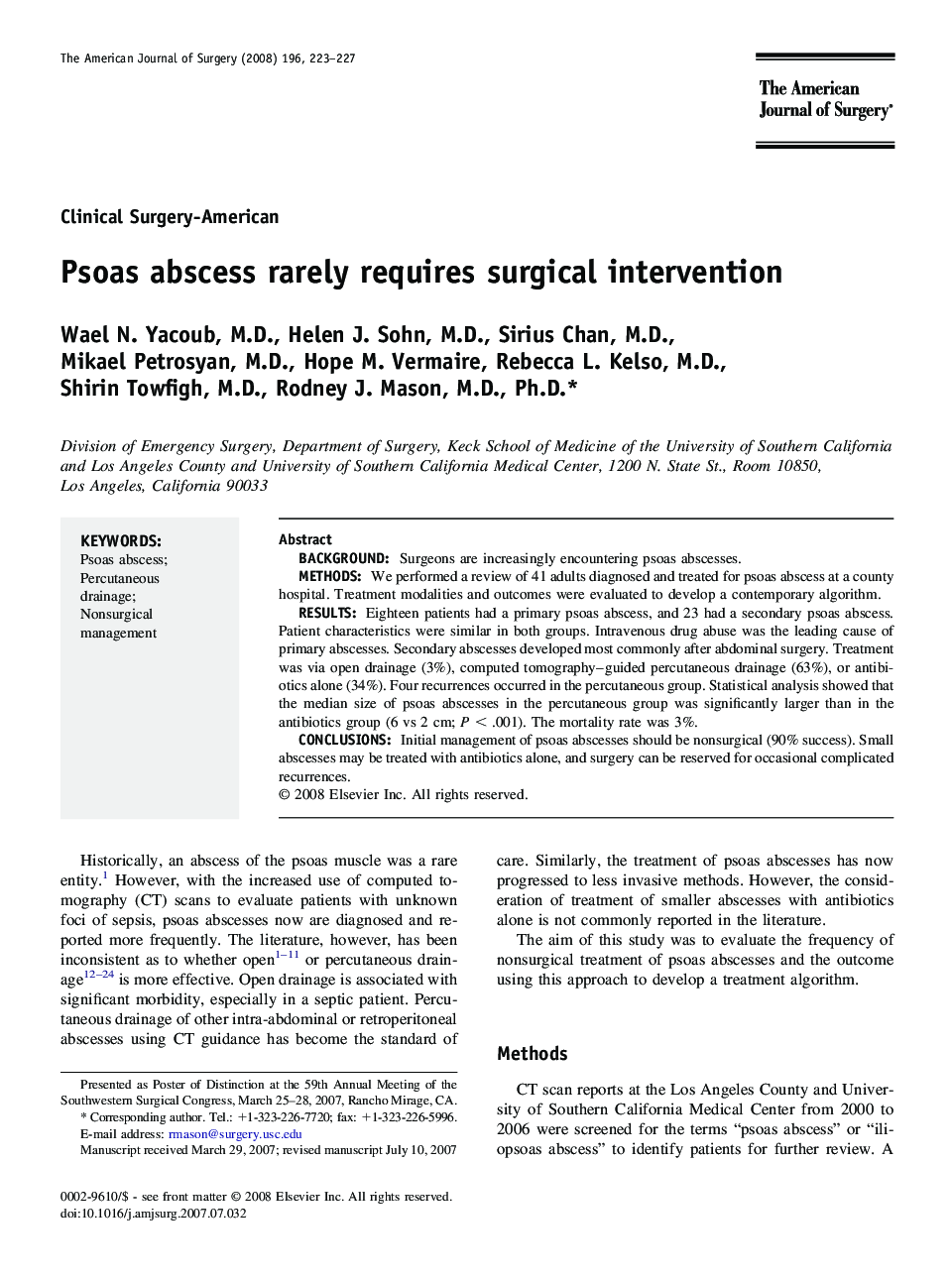| Article ID | Journal | Published Year | Pages | File Type |
|---|---|---|---|---|
| 4281598 | The American Journal of Surgery | 2008 | 5 Pages |
BackgroundSurgeons are increasingly encountering psoas abscesses.MethodsWe performed a review of 41 adults diagnosed and treated for psoas abscess at a county hospital. Treatment modalities and outcomes were evaluated to develop a contemporary algorithm.ResultsEighteen patients had a primary psoas abscess, and 23 had a secondary psoas abscess. Patient characteristics were similar in both groups. Intravenous drug abuse was the leading cause of primary abscesses. Secondary abscesses developed most commonly after abdominal surgery. Treatment was via open drainage (3%), computed tomography–guided percutaneous drainage (63%), or antibiotics alone (34%). Four recurrences occurred in the percutaneous group. Statistical analysis showed that the median size of psoas abscesses in the percutaneous group was significantly larger than in the antibiotics group (6 vs 2 cm; P < .001). The mortality rate was 3%.ConclusionsInitial management of psoas abscesses should be nonsurgical (90% success). Small abscesses may be treated with antibiotics alone, and surgery can be reserved for occasional complicated recurrences.
